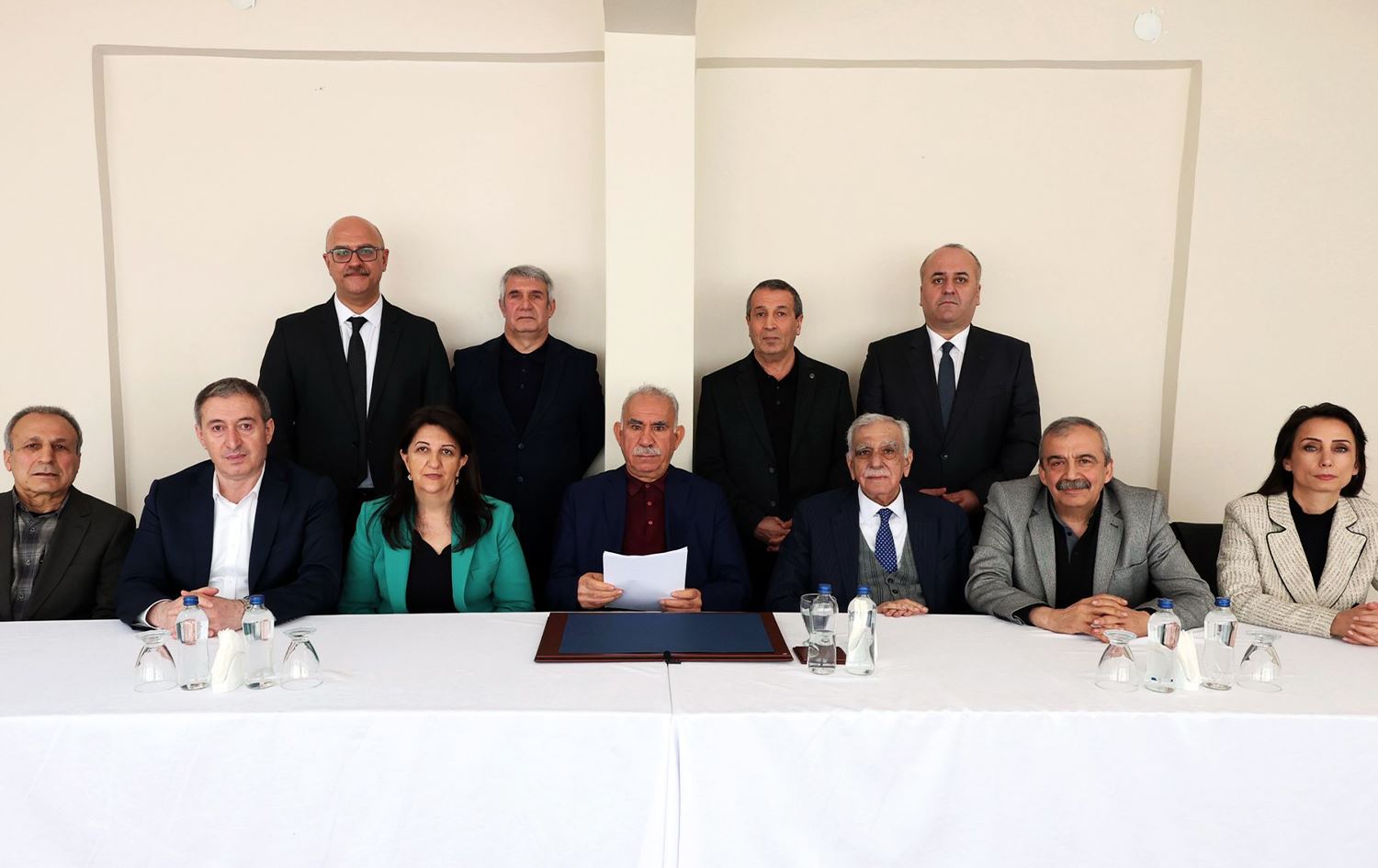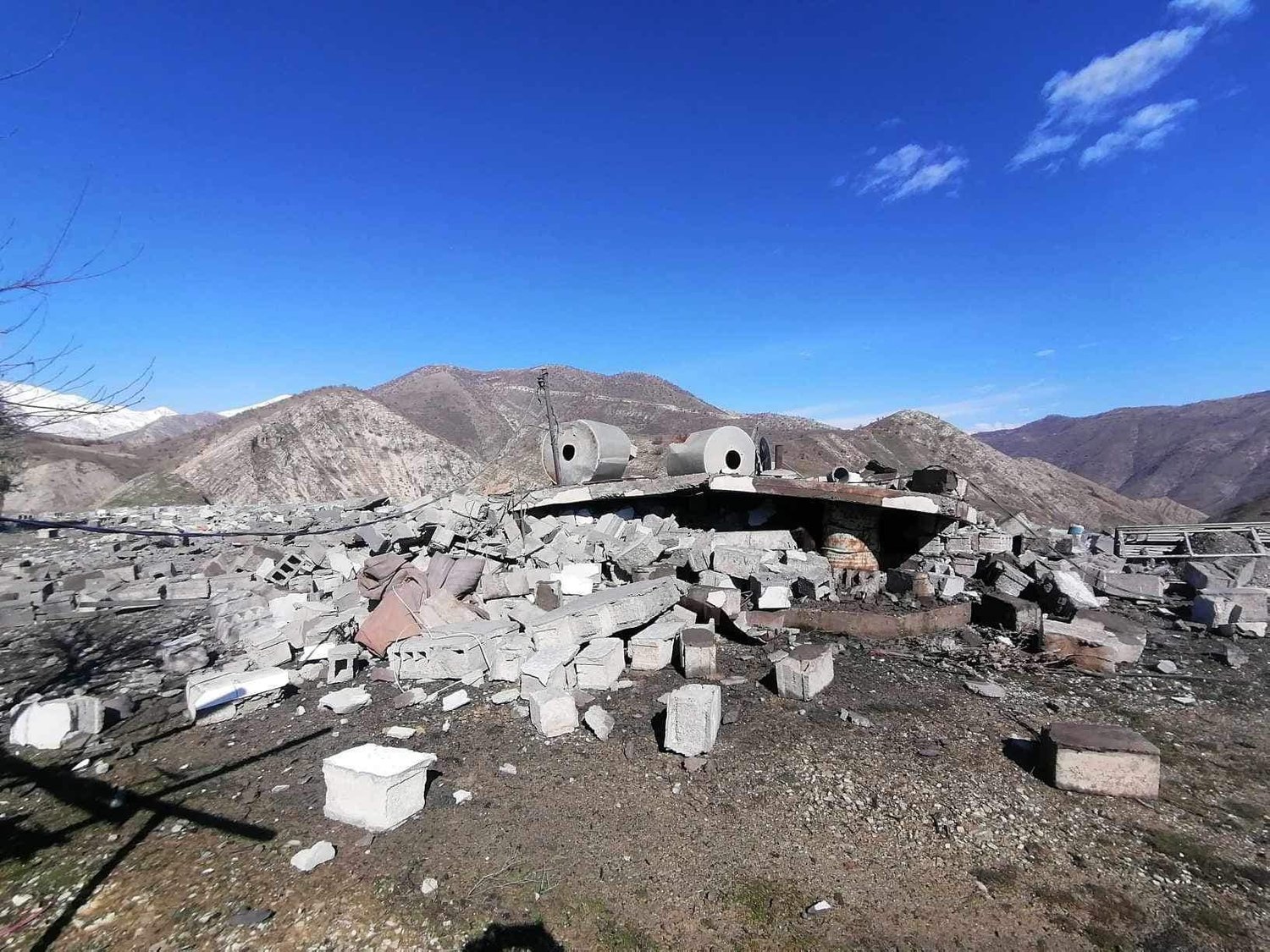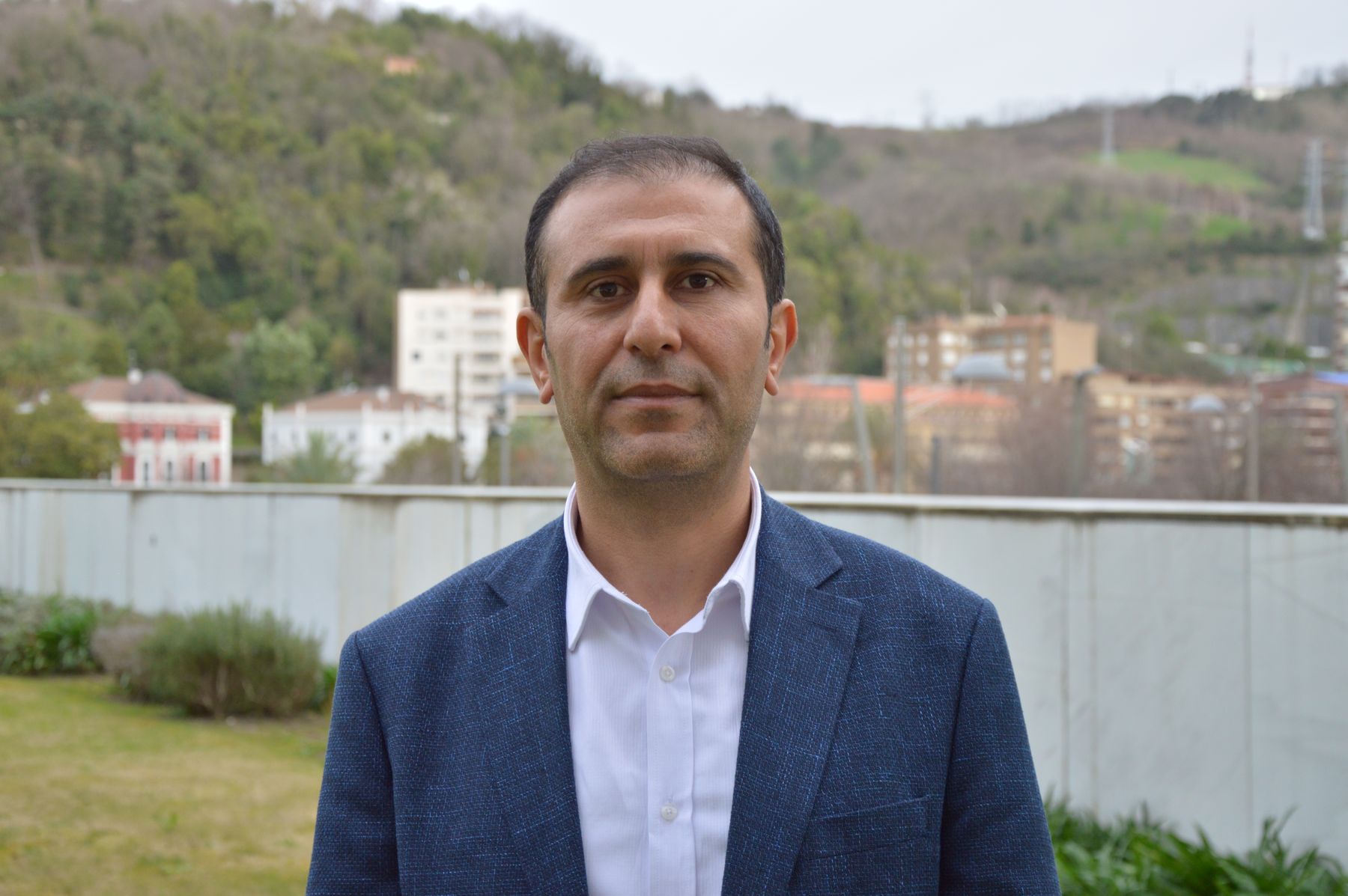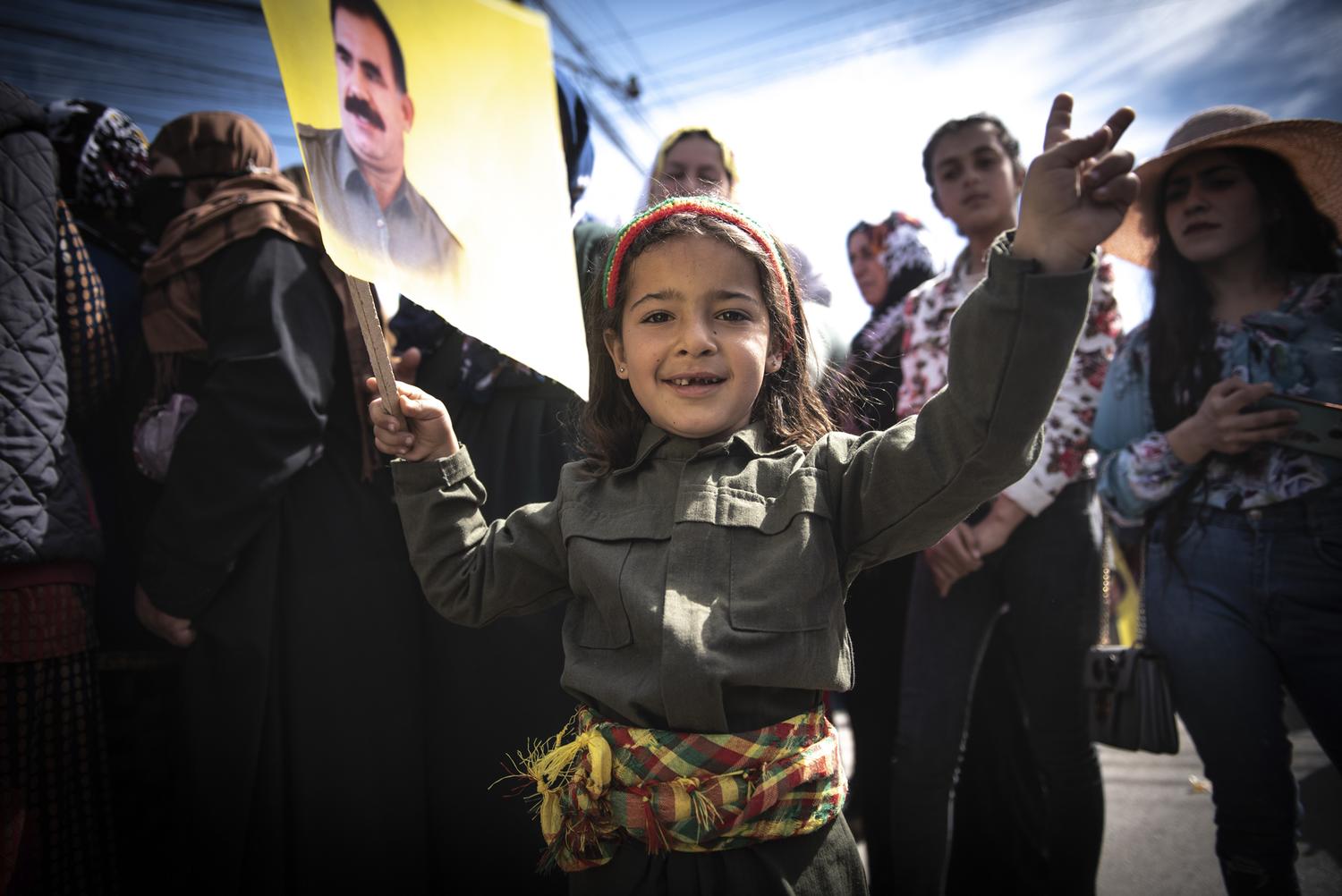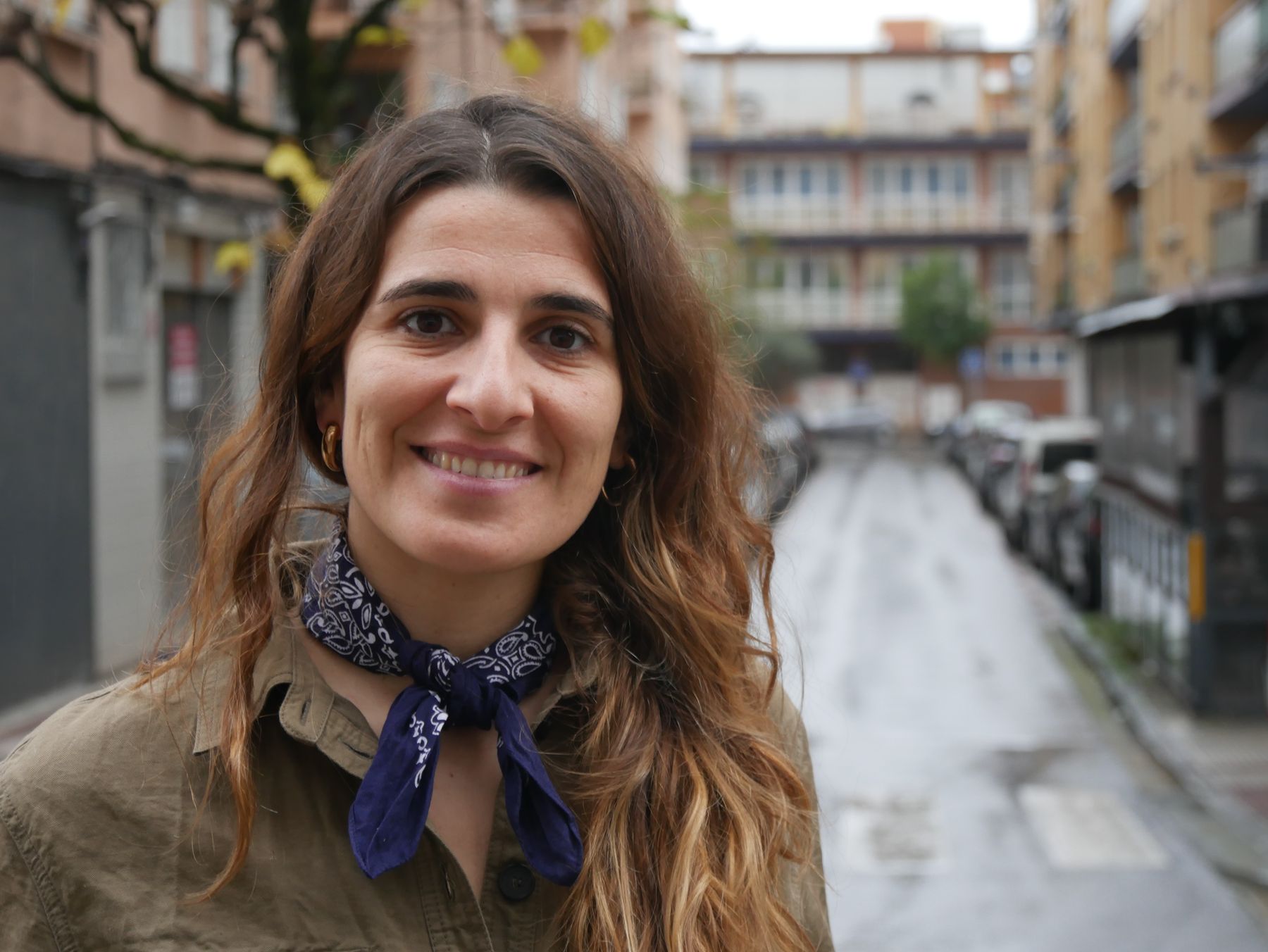"If there are no liberated women, there will be no freedom in Kurdistan"
- Invited by ERNAI, Askapena and Bilgune Feminist, two Kurdistan militants held a talk tour in late February in Euskal Herria. Melike Yaşar is one of them. There was talk at the time of the liberation movement in Kurdistan, in which they stressed the importance of the women’s movement and that of young people. The Kurds have moved from the more traditional socialist perspective to proposing a different model, and despite the attacks, they are dedicated to it.
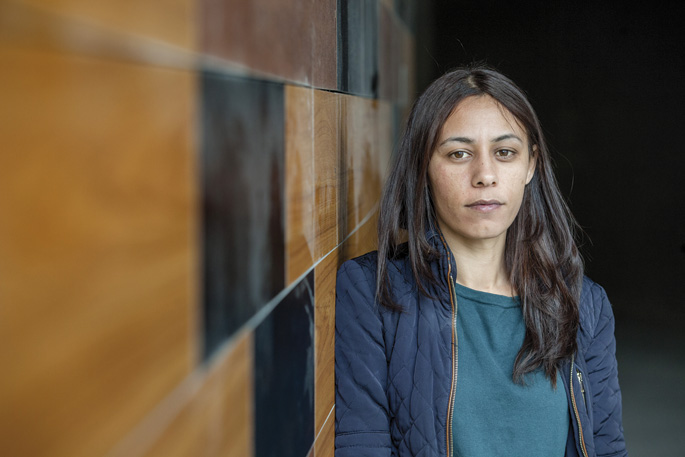
One of the foundations of the Kurdistan liberation movement is the women’s movement, organised with its own structures.
Kurdistan, as we know, has been divided into four states since 1923: Iran, Iraq, Syria and Turkey. Against this separation, the Kurds immediately organized resistance groups, which did not last long. However, there were many uprisings, for example, one in the Dersim region in 1938. Many women participated. In the Kurdistan liberation movement there are many women who are symbols.
I will bring here the name of a more contemporary militant who was murdered two years ago in Paris together with two other comrades: Sakine Cansiz He was one of the founders of the PKK, and while alive he was also very famous in Kurdistan, he was an example. Among other things, the Kurds recall Cansiz for his role in the Diyarbakir prison movement in 1980, following the coup d’état in Turkey. This coup strongly attacked, among other things, the newly created PKK. Among the detainees is Cansiz, who was transferred to Diyarkabir prison. He played an important role in the local protests.
Could it be said that the PKK began to launch the women’s movement?
The women participated from the very beginning: in the university, in the PKK… In any case, they started from a Marxist-Leninist vision of the revolution. For the movement, the participation of women was important, but to serve the national cause. Of course, the issue of women’s equality was on the table; moreover, in Kurdistan society the patriarchal structures were up to the root. In any case, as in Marxism, the liberation of women was seen as a matter of post-revolution: after the revolution, once an independent state has been achieved, we will all be free, even women. That's a big mistake, and that's why realism went to a halt, because the issue of women got behind the nation.
When did it start to change that?
When the armed struggle began, in 1984, many women were thrown into the mountains, into the struggle. The women's movement was starting to wake up and it was a big push that many of the women who went to the mountain made that decision, not so much for national liberation, but because they saw the PKK movement as an opportunity to break free from the feudal and patriarchal structure.
What situation were the displaced women on the mountain?
With a great paradox, because on the mountain there were women and militant men. But militant men were feudal and thought that women couldn't fight. If they wanted to participate, at most they could stay in the back lines. Öcalan knew it and therefore addressed the issue of family and women. He began to realize that, except for the liberated women, there would be no liberated Kurdistan.
Öcalan has been the most affected.
Yes, indeed, at that early time Öcalan lived in Damascus and had a political school. There he called militants and commanders and gave them training on the liberation of women, taught them that socialism should have the liberation of women in the center. Once out of school, these trained people had to bring what they learned to society. The citizens accepted the prospect of the liberation of women, because Öcalan said it and is a beloved leader. We don't know if they believed in that point of view in their heart and in their mind, but what Öcalan said had to be fulfilled. That was a great advantage for us, we have used it in our favour.
On the other hand, starting in 1995, he launched an absolutely unusual pro-liberating tactic of women: first, an independent movement of women began. Women organized their own barracks and began to perform their own actions, which allowed them to gain respect for men and citizens, and then it was women commanders who put themselves at the head of the masculine militias and, finally, the women’s party emerged.
What kind of social work do the structures of the women’s movement perform?
One of the most important methods of militant women in Kurdistan is to go home and raise money for the movement. The militants do not have their own home or marry, they dedicate 24 hours to movement and society. It's a movement that really starts from the bottom. During the day, when men are away from home, they turn to women and talk to them. They do sensitization work, they tell them that they are also part of the movement, even if without them the movement would not be possible.
Thus, the women in their homes report their problems to the women who participate in the committees. Women can go to the commission and say, my husband sticks to me, or my husband wants to marry my daughter, when he's 20.
There are, of course, shelters for women, among others, those who have suffered violence. These houses are not like those of Europe or Turkey, they are not just houses of refuge. On the contrary, they function as a community: they receive training, participate in workshops to learn how to read and write.
Today, in the paradigm of the liberation movement of Kurdistan, that is, in Democratic Confederalism (KD), the liberation of women is a fundamental pillar.
With Öcalan's entry into prison, a new phase, a peace process, begins. There began a process of criticism and self-criticism. Öcalan realized that he had achieved a lot by an independent Kurdistan, but he realized that something was missing. Between 1999 and 2003, concepts such as realism, patriarchy, power and sexism were discussed. It was the first time that the movement began to discuss what the errors of realism were, what Marx's errors were. In fact, the approach of national independence was not enough to respond to the social problem.
Democratic Confederalism (KD) is a democratic, ecological, anti-sexism paradigm, centered on the liberation of women. It proposes, for example, the transformation of the military branch of the State and the replacement of the army by self-defense units of the people, in line with legitimate self-defense: you can defend yourself, but you do not have an army to attack, an imperialist structure.
The KD is a roof structure with several branches: youth movement, political party (PKK)… In it a new quota was established: in all the structures there must be as many women as men. In addition, these women are not elected by men, but send the movements of women and, quite simply, have to accept them. Other criteria were also established: everything that is used against a woman is directly external, even the one that is married to two women.
This new paradigm is bearing fruit in Rojava (Western Kurdistan, an autonomous area of the Kurds that is part of the Syrian State).
Yes. The media have shown above all the military aspect: that women are fighting courageously, etc. That is more satisfactory. The transformation of the entire system has not been reported, but if it were not based on the KD system, which has the liberation of women in the center, women would not fight on the front.
What is the new Rojava system?
In 2011, when the conflict began, we did not go to the Syrian regime or to the anti-regime coalition that ran from Haiti. On the contrary, we established our third line: DC. When the Arab Spring began, it was a mirage for all of us, because Arab women rose up against the dictatorship. The dictatorship was torn down, but another has come, and the situation of women is worse now, as they had no alternative. In the case of Rojava it has not happened because the Kurds were ready and, when the chaos began, they took advantage of it for them.
In Rojava, for example, cooperatives have been set up to implement their own agricultural model. One of the measures taken by these cooperatives was to see what land was available and how it was being used. In this way, unemployed people can be allocated to uncultivated land.
The last few weeks have been very hopeful in Koban.
Yes. But now we have to rebuild Kobane: infrastructures and other things. We appeal to everyone, everyone can help, by donating money or going to it: architects, doctors… we need everything. To this end, we have set up international solidarity commissions, also here in Euskal Herria. Precisely, in the talks we have held these days, many have asked me what they can do for Kobane. We need all the help: a new structure will be built in Koban. A new world opens up.
Abdullah Öcalan PKK-ko buruzagiaren proposamena da. 2005. urtean aurkeztu zuen, espetxean zela, nazio-estatuaren ikuspegi tradizionalarekiko kritika eta alternatiba modura. Öcalanen esanetan, estaturik gabeko pertsonen sistema demokratikoa da. Burujabetzan oinarritutako proposamen bat da, hala elikadurarena nola ekonomikoa, eta ekologismoa eta feminismoa ditu ardatzetako bi. Autokudeaketarako eredu bat da, non gizarteko sektore guztiek beren antolakuntza-egitura propioak sortuko eta kudeatuko dituzten. Askatasunaren ideologia du oinarri teorikoa: pertsona askatzea lortu behar da, gero pertsona horrek harreman askeak sor ditzan, alegia, jabetza-ikuspunturik gabekoak. Harreman horiek eraikiko dituzte familia eta gizarte demokratikoa.
Lurrikara geopolitiko bat astintzen ari da Ekialde Hurbileko mapa. Anabasaren erdian, Abdullah Öcalanen bakerako azken deiak mahai gainean jarri du eskualdeko gatazka armatu zaharrena. Ez, aurrekariek ez diote bide ematen itxaropenari, eta historiaren trena inoiz baino... [+]
SDF kurduek gidatutako koalizioak eta Siriako Gobernuak su-etena adostu dute. SDFk Siria ekialdeko eta ipar-ekialdeko eremu zabala kontrolatzen du egun, eta hitzarmenak jaso duenez, gobernuaren esku geratuko da orain.
Abdullah Öcalan buruzagiak PKKri otsailaren 27an eskatu zion armak uzteko. Taldeak egin duen adierazpenean babes osoa agertu dio buruzagiari eta Öcalanek eskatutakoa betetzeko konpromisoa adierazi du.
Urteak iragan dira bere azken argazkia ikusi zenetik. 26 urte daramatza preso Abdullah Öçalanek Turkiako Imrali uhartean, "erakunde terroristako" buruzagitza egotzita. Ostegun eguerdian bere bideo bat ez, baina argazki berri bat zabaltzeko baimena eman du... [+]
Turkish helicopters and fighter aircraft cover the sky in the Kurdish area in northern Iraq. The Turkish Air Force has bombed 381 sites in the major military operation in recent weeks in the Kurdistan Autonomous Region (DRC). The Turkish Ministry of Defence has stated that "the... [+]














